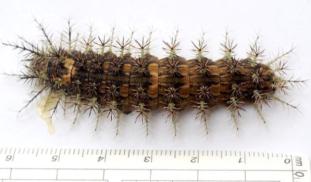Please wait...
About This Project
University of Los Andes
Venomous caterpillars of the genus Lonomia cause deadly accidents in Colombia. In Brazil it is estimated that 30% of individuals who come into contact with these caterpillars die in the absence of treatment. The most widely used treatment is the Antilonomia serum, produced by the Butantan Institute in Brazil. However, in our experiments, it has been found to be less effective against colombian species. We aim to develop a synthetic antivenom against Lonomia using a cell-free system.
More Lab Notes From This Project

Browse Other Projects on Experiment
Related Projects
Toward ethical and affordable antivenom solutions: Can anti-toxin be animal cruelty-free?
Snakebite envenoming causes over 100,000 deaths annually, yet current antivenoms depend on animal plasma...
Microplastics: Can engineered enzymes remove microplastics from the human body?
Polyethylene terephthalate (PET) microplastics have been detected in human blood and tissues, and linked...
Shutting down cancer’s recycling system with exosome-based therapy
Pancreatic cancer is one of the deadliest cancers because its cells survive by recycling their own components...





